Fall is one of the best times of year to get out and explore nature. The leaves are changing color and there are so many beautiful sights to see. If you’re looking for the best leaf-peeping spots in North Carolina, you’ve come to the right place. In this article, we’ll share our top picks for places to go, peak dates, and more. So, grab a cup of coffee (or a pumpkin spice latte), and let’s get started!
Linville Gorge
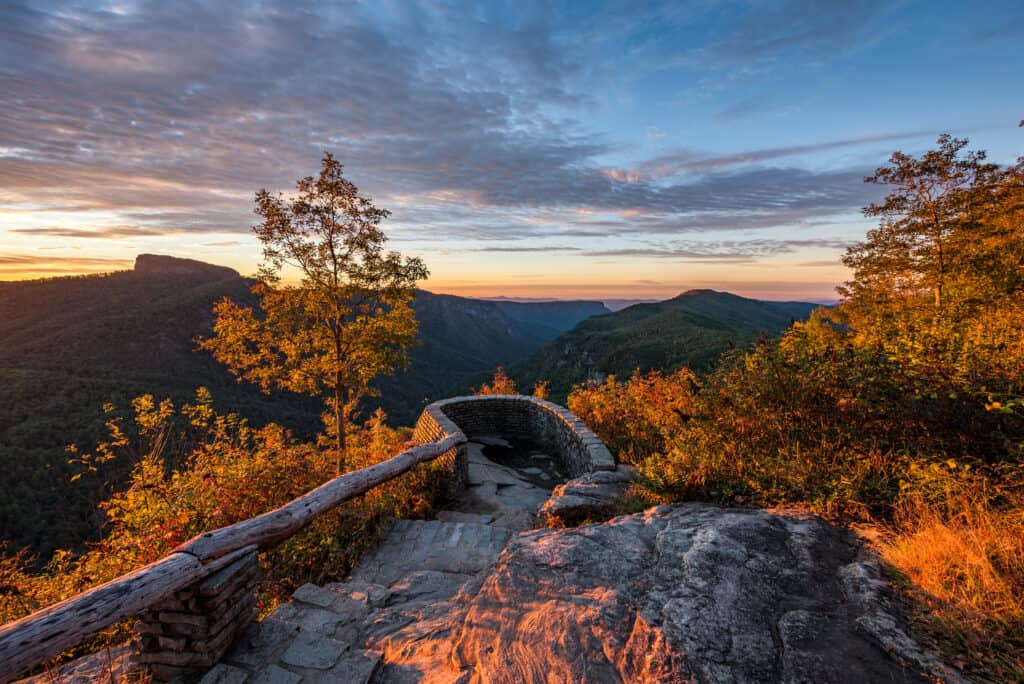
Many people consider this area to be the Grand Canyon of the East. The peak date for viewing fall foliage in Linville Gorge is typically mid-October.
©iStock.com/Aheflin
One of the most popular places to go leaf peeping in North Carolina is Linville Gorge. This 11,000-acre gorge is located in the Blue Ridge Mountains. It is home to some of the best views in the state. Linville Gorge is a really beautiful place with the Linville River running through it. Many people consider this area to be the Grand Canyon of the East. The peak date for viewing fall foliage in Linville Gorge is typically mid-October.
Linville Gorge is a popular hiking destination. Be prepared for some moderate to strenuous hiking if you want to see the best views. There are trails of varying difficulty levels, so there’s something for everyone. Be sure to dress appropriately for the weather and wear sturdy shoes. If you want to go on a hike that is not too difficult, try the hike to Table Rock. The trail is just over one mile long. However, the trail does go up to the summit so it can be slightly challenging.
Linville River flows from Grandfather Mountain, through the gorge, and over Linville Falls. Linville Falls is a beautiful spot for leaf peeping as well. There are several different viewing areas that allow visitors to see the falls from different angles. There are also hiking trails that lead to different parts of the falls and the gorge.
Grandfather Mountain
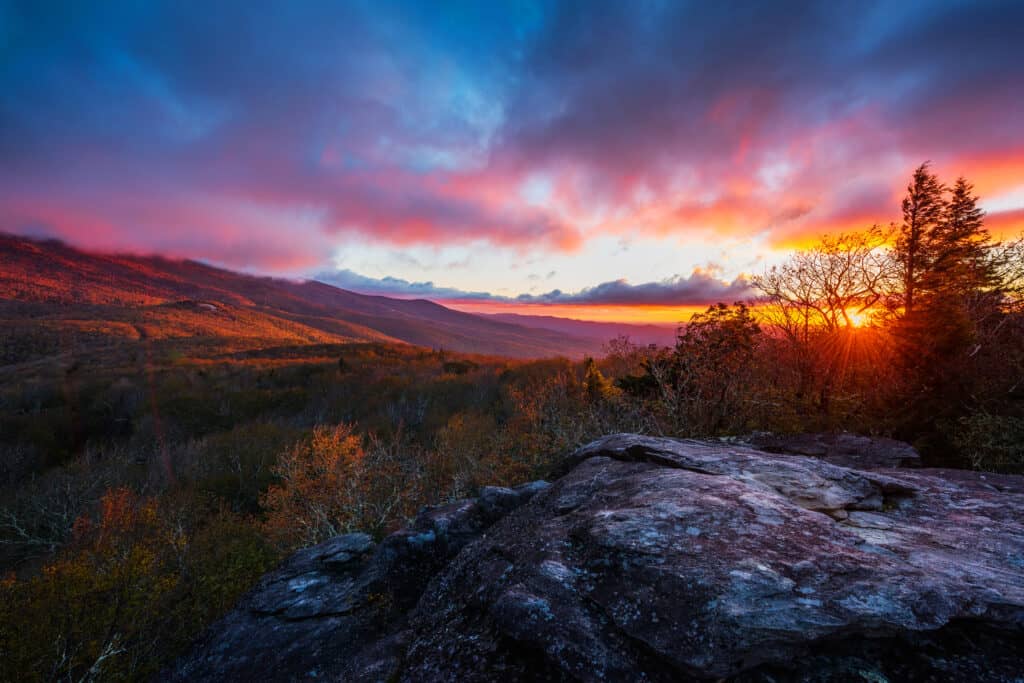
The best spot to see fall leaves in all their colorful glory is on the top of the mountain. The colors are so vibrant and beautiful up there.
©iStock.com/Aheflin
If you’re looking for an unforgettable leaf-peeping experience, look no further than Grandfather Mountain in Linville. This 5,946-foot mountain is home to some of the most incredible views in North Carolina. There are plenty of spots to explore. The leaves here usually begin to change color in September. Peak foliage is during the first week or two of October.
The best spot to see fall leaves in all their colorful glory is on the top of the mountain. The colors are so vibrant and beautiful up there. You can also see the leaves changing color in the valley below as well. It’s a really amazing sight to see! Other great spots to see the leaves are along the Blackberry Trail, on top of MacRae Peak, and at Sunset Rock. Julian Price Park also sits at the base of the mountain. You can enjoy the fall foliage while kayaking, fishing, and canoeing as well.
When visiting Grandfather Mountain, there are a few things you should know. First, there is an entry fee of $20 per vehicle or $12 per person if you’re hiking up from the profile trailhead. Second, since this is a state park, pets are not allowed on any trails or at any overlooks. Finally, due to its high elevation, this area can experience extreme weather conditions. Even in October, come prepared with appropriate clothing and gear.
Carvers Creek State Park
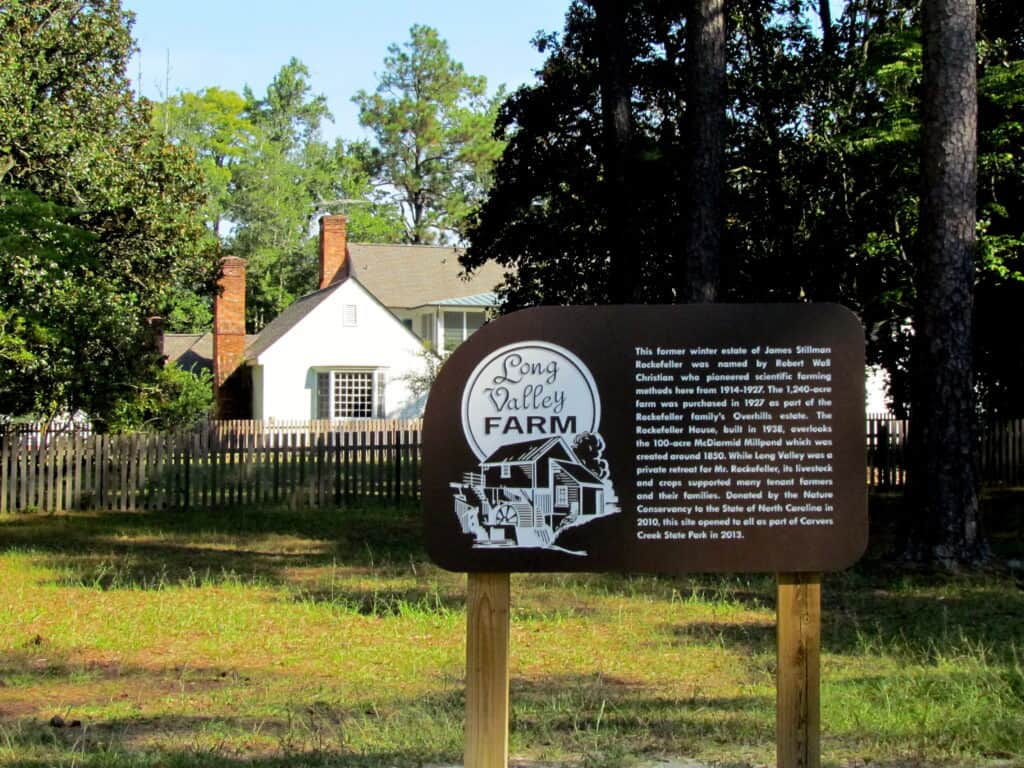
You can visit Long Valley Farm and the Rockefeller House where James Stillman Rockefeller used to take refuge during the winter season.
©4,320 × 3,240 pixels, file size: 3.92 MB, MIME type: image/jpeg – License
Carvers Creek State Park near Spring Lake is a great spot for leaf peeping in North Carolina. The perfect location if you want to enjoy the fall foliage without having to fight large crowds. The park encompasses more than 4,000 acres, making it a great spot for hiking, biking, and other outdoor activities. It is also an excellent spot for birdwatching. More than 200 species of birds have been spotted in the park, including eight woodpecker species. Fall foliage usually peaks around the end of October or the beginning of November.
You can visit Long Valley Farm and the Rockefeller House where James Stillman Rockefeller used to take refuge during the winter season. There are two trails in this area of the park that you can use for biking and hiking. From the Cypress Point Loop Trail, you can look toward the dam and see the pavilion (which was a sawmill in the 1800s). You can also see the grist mill, which played a vital role in utilizing water power in the 1900s.
The other half of the park is the Sandhills Access, which has trails of many sizes traversing sandy soil. The Dead End Spur Trail, for example, is only a half mile long, while the scenic Longleaf Pine Trail is four miles long.
Biltmore Estate
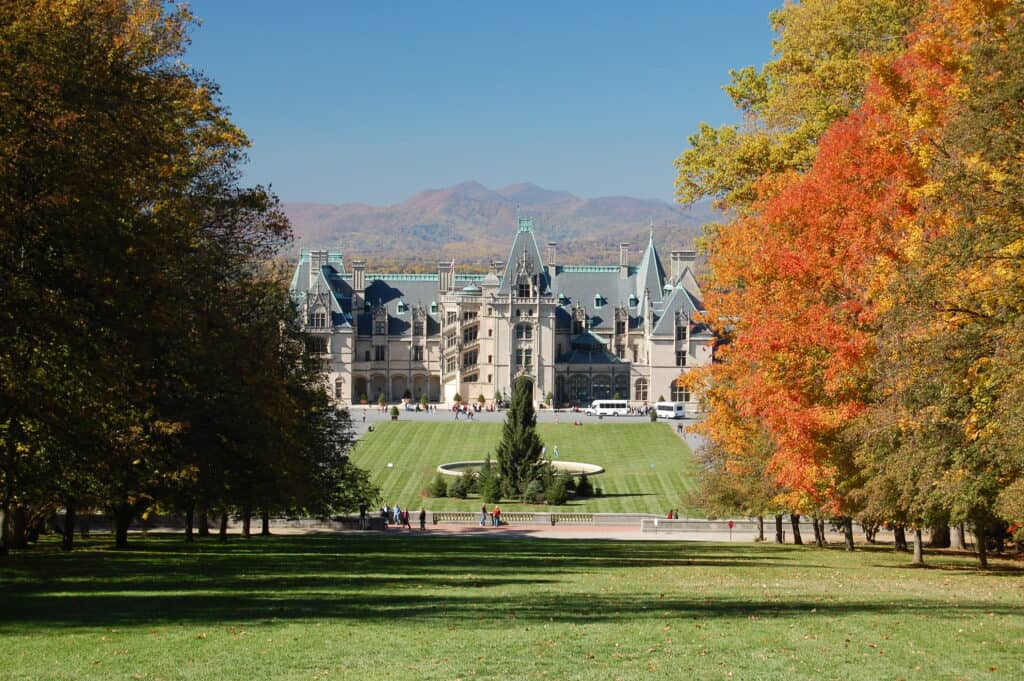
And if you are especially fond of the spooky season, you might be interested to know that Biltmore Estate is one of the most haunted places in North Carolina!
©R. L. Terry / CC BY-SA 3.0 – License
The Biltmore Estate in Asheville, North Carolina, is the largest privately-owned estate in the United States. It is an amazing Gilded Age mansion with an on-site winery that is always a treat to explore, but its 8,000 acres of beautiful grounds and lush gardens are even more magical in the fall. The leaves in this area typically are at peak foliage in the middle of October.
If you want a better vantage point to see the grounds in their entirety, you can climb up the estate’s spiral staircase to the Observatory. In addition to beautiful architecture and stunning fall foliage, there are also 20 miles of trails on the grounds where you can see colorful sourwood, dogwood, and maple trees. Hiking, biking, and horseback riding are popular options for exploring the grounds.
And if you are especially fond of the spooky season, you might be interested to know that Biltmore Estate is one of the most haunted places in North Carolina! Visitors to the Estate report seeing previous residents wandering the grounds and library, and there are even accounts of a headless orange cat being spotted occasionally.
Admission to the Biltmore House is a bit pricey, so be sure to check their website and plan accordingly.
Blue Ridge Parkway
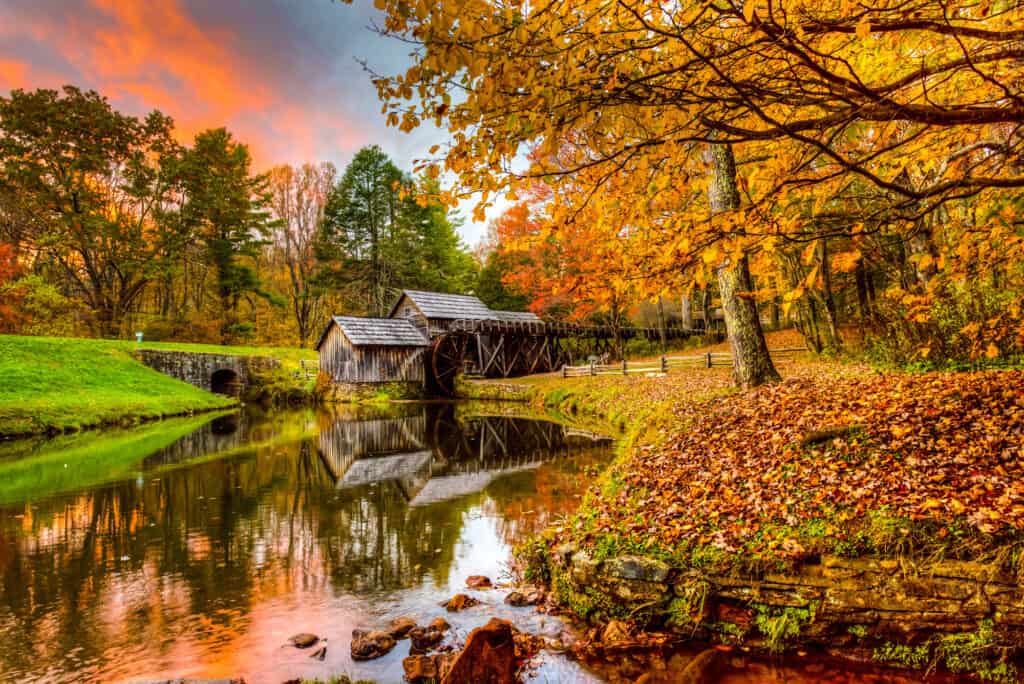
Mabry Mill is a watermill located on the Blue Ridge Parkway in Floyd County.
©iStock.com/LarryKnupp
The Blue Ridge Parkway is one of the most scenic drives in the United States, and it’s especially beautiful in the fall when the leaves change color. The parkway runs for 469 miles through the Appalachian Mountains, from Virginia to the Great Smoky Mountains National Park in North Carolina. There are numerous places to stop for food, culture, and beautiful fall foliage along the way.
The trees usually hit peak foliage around the middle or end of October, although it depends on the location and elevation. The trees high up on the peaks begin to change color first, and those in lower elevations change their colors last. It can be hard to predict exactly where the leaves will have the best colors, but you can check out daily webcams to see what they look like each day.
Crabtree Falls at Milepost 339.5 is a very popular destination for leaf peeping in North Carolina. Fiery fall leaves mixed with wildflowers and ferns surround the cascading water as it sails over a 60-foot-tall rocky cliff. The scenic trail to Crabtree Falls is only two and a half miles, but it is a challenging hike with rocky terrain and steep inclines.
More beautiful waterfalls can be seen at Graveyard Fields (Milepost 418.8), one of the very few hiking trails along the Blue Ridge Parkway that has restrooms! There is a short hike (about 1/3 of a mile from the parking area) that starts from the overlook on the Blue Ridge Parkway and takes you to a lovely waterfall. There is also a longer three-and-a-half-mile loop hike that takes you to a second waterfall.
For more assistance in planning your leaf-peeping excursions in North Carolina, you can check out the weekly Fall Color Report here.
Up Next:
- Why Do Leaves Change Color in the Fall?
- The 10 Biggest Lakes in North Carolina
- 10 Amazing Mountains in North Carolina
- The 5 Best Places to Camp in North Carolina this Summer
The photo featured at the top of this post is © JSpannhoff/Shutterstock.com
Sources
- App State Department of Biology, Available here: https://biology.appstate.edu/fall-colors/fall-color-map-north-carolina
- Blue Ridge Parkway, Available here: https://www.blueridgeparkway.org/fall-color-on-the-parkway/
- Biltmore, Available here: https://www.biltmore.com/
FAQs (Frequently Asked Questions)
When is peek leaf “peeping” season in North Carolina?
The leaves here usually begin to change color in September. Peak foliage is during the first week or two of October.
What’s a good road trip for leaf “peeping” in North Carolina?
The Blue Ridge Parkway is one of the most scenic drives in the United States, and it’s especially beautiful in the fall when the leaves change color. The parkway runs for 469 miles through the Appalachian Mountains, from Virginia to the Great Smoky Mountains National Park in North Carolina. There are numerous places to stop for food, culture, and beautiful fall foliage along the way.
Thank you for reading! Have some feedback for us? Contact the AZ Animals editorial team.






